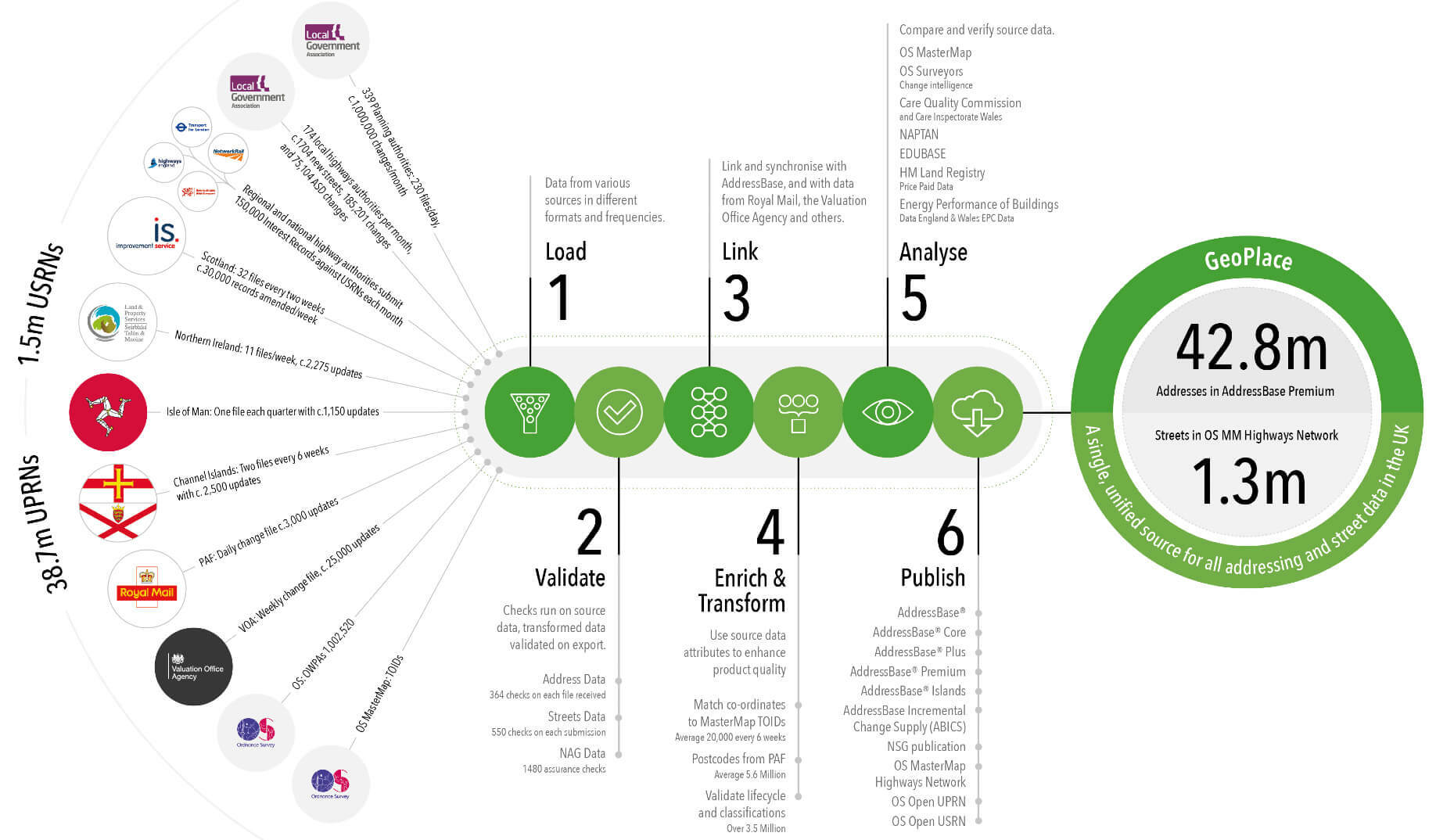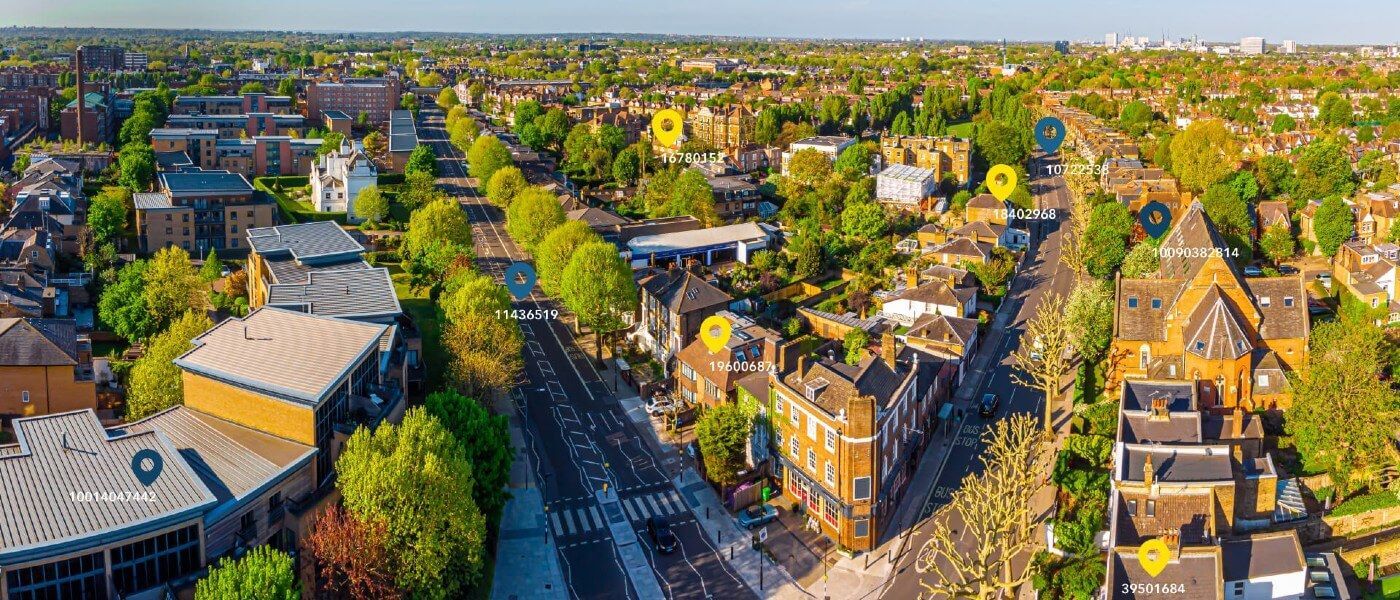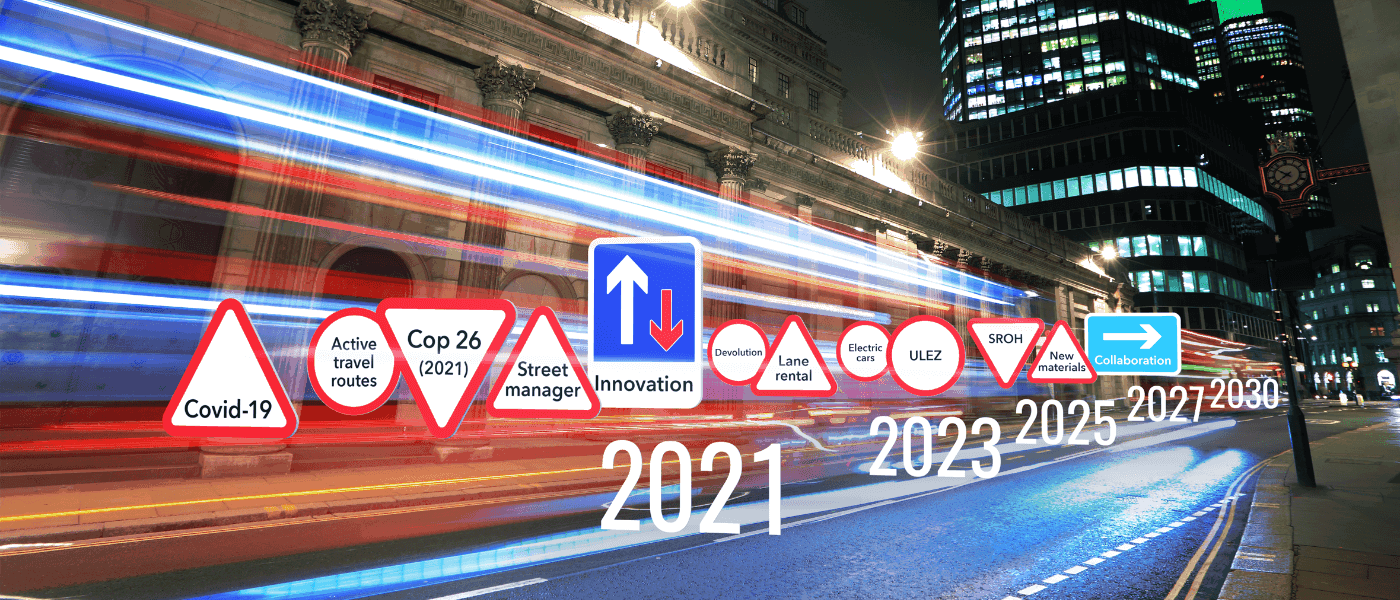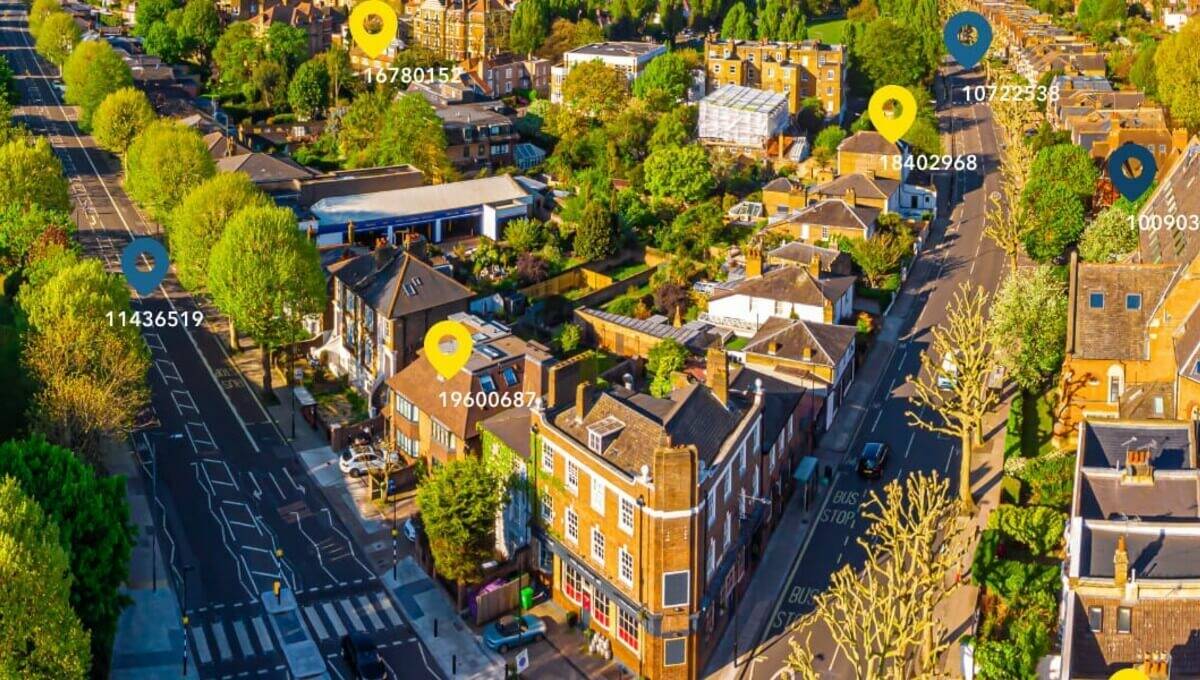2021 was a challenging year, but 2021 was also a very rewarding year – a year in which our organisation celebrated its 10th anniversary, and a year in which tens of thousands of other organisations became aware of the role for and value of geospatial data. The hard work continues apace, and the adoption of UPRNs and USRNs is gathering momentum.

The GeoPlace team worked remotely throughout, and I’m pleased to report that not only did our service levels remain high, but we were also able to launch new services for our local authority community.
We’ve always worked closely with local authority address and street Custodians. When the social distancing measures first came into place, we knew what it would mean for them, having to work from home: extra pressure, and a sense of being disconnected. So, we moved all of our governance meetings online as quickly as we could. This was a great success, enabling even more Custodians to take part in the vital process of ensuring national address and street datasets are of the highest possible quality.
Data coming in to us from local authorities is a key component in the GeoPlace data workflow – the ‘engine room’ of UPRNs and USRNs. In the last year, my team made a total number of 7,369,227 updates to our address dataset, adding a total of 438,759 new UPRNs and 11,114 USRNs.

Click here or on the image above to download the infographic
Community – going from strength to strength
Local authorities have shown their resilience in the face of challenge, and dedication to enabling quality data during 2021. It hasn’t all been plain sailing, but our sense of community and our overall data quality have both gone from strength to strength.
As always, Custodians have been at the forefront of ensuring the nation has resilient data to respond to emergencies, whether that be protecting vulnerable people and supporting the national response to COVID or providing support in civil contingencies such as identifying properties still without power a week after the recent Storm Arwenn.
The introduction of GeoGateway has been a major highlight in our year. This service enables local authorities to track their data quality improvements, daily. In addition to enhancing the life cycle process, this has also improved the speed and frequency in which data quality improvements are made. The tool provides an immediate view of priorities for a local authority, and it’s been well received. Custodians have told us it’s useful to see their reports in real-time.
There’s been a real sense of GeoPlace and Custodians coming together over the last twelve months. Screen sharing and our MS Teams meetings have helped us dig down into the detail of issues and concerns. We’ve also learned a lot about the challenges that many Custodians face, getting their role recognised and appropriately resourced, so, we’re now working on additional resources that should help to raise the profile of their role, and its value to society.

Before I go any further, I’d like to make a special note here, about the dedication of local authority officers who volunteer their own time to get even more involved in the community. The geospatial community is unique, I think, in the enthusiasm for our metier that drives us to support each other’s work. Local authority officers in particular put a huge amount of effort into moving us forward together, and a special note of thanks goes to all of the members of the working groups, the Chairs and ACE.
People-focussed, always
Since 1801, the nation has been setting aside one day every ten years to conduct the Census, collecting an understanding of all people and households. It is the most complete source of information about the population we have and, perhaps most importantly, the Census details collected from householders is a key data source for allocating funding to authorities in England and Wales. It is used by local authorities to target their resources and plan for future demands, so it’s imperative that every citizen is included.
The latest Census took place on 21 March, was powered by OS AddressBase. We’ve been working closely with ONS for the past three years to ensure AddressBase met ONS’s requirements for a comprehensive address list. We’re proud to say that our work was pivotal in underpinning the method by which we will all benefit from the 2021 Census.
The right place for UPRNs
Highlights of our year: 2021 began with the publication of a confident, important and well-received open letter. On 12th January, a cohort of the most prominent bodies in the UK’s Residential Property Sector wrote to the Secretary of State for Housing, Communities and Local Government. The letter highlighted ways in which Government can support the appetite for greater adoption of the UPRN, right across the sector.
Momentum continued throughout the year. In his keynote speech at the GeoPlace annual conference in May, the Rt Hon Chris Pincher MP, the Housing Minister stated that “UPRNs should be ‘baked in’ to streamline house buying and selling”. Speaking alongside the Geospatial Commission, the Institute of Residential Property Management (IRPM) and the UK PropTech Association, the Minister emphasised that many barriers in the housing sector could be removed through the ubiquitous adoption of UPRNs, as they bring simplicity and agility to all processes.
This view is widely shared by many organisations. The Royal Institute of Chartered Surveyors (RICS) discussed many of these in its piece, “Why we should be encouraging UPRN adoption”. The IRPM also issued a white paper that called for the establishment of a dedicated UPRN Task Force, comprising representatives and champions from both the public and private sector; and the Conveyancing Information Executive issued a white paper on the role of UPRNs in improving the property transactions process.
We continued to support this theme, throughout the year. In September, GeoPlace facilitated a roundtable to examine how UPRNs can unlock value on the property sector in practice. With 294 attendees dialling in online to the live-streamed event, representatives from MHCLG, The Lettings Industry Council (TLIC), IRPM and RICS all made important contributions. You can read a report of the event, here.

This vocal, united support for wider adoption will have an impact. Both Zoopla and Rightmove have now migrated to using AddressBase and its embedded UPRNs. This means they’re using the more-complete, more reliable address dataset for residential properties, which will save time and improve data quality throughout.
Enabled by OS’s Open Identifiers policy, the Department for Levelling Up, Housing and Communities have now incorporated UPRNs into its Energy Performance Certificates (EPCs), too. This move has been widely welcomed by property and climate change campaigners. Read our article in UKA to see how this has opened up new possibilities for the use of data.
The Geospatial Commission has recently announced the start of the build phase for the National Underground Asset Register. GeoPlace will be working alongside the Geospatial Commission and its prime contractor, Atkins, to support the onboarding of local authority asset owners in three initial regions, preparing for the national rollout.
At the beginning of December, it was a privilege to find myself speaking to the House Buying and Selling Group, an industry body set up to help improve the process for home movers when buying and selling their property. Their technology subgroup has designed a dataset for Buying and Selling Property Information (BASPI) that will enable data to flow seamlessly between and across systems. UPRNs have been assumed as a primary field for the schema.

Conferences – online, on point
Our GeoPlace annual conference is always a highlight, as it brings local authority Custodians together with the organisations and people who use the data they maintain on a day-to-day basis. Our challenge was to keep the conversation flowing.
My team developed a platform that enabled attendees, speakers and sponsors to interact over the two-day event. With an extremely high level group of speakers, we attracted over 700 attendees – it was a very successful event, and I’m delighted at the positive feedback we’ve received. The teams here at GeoPlace put a huge amount of effort into this conference each year, and the Custodians’ involvement in the day is evident.

This year we also supported HAUC(UK) in their annual event, on a similar platform the week after our own. Our relationships with the highways and utility sector continues apace, and this event also set record attendance levels. We also built and launched a new HAUC(UK) website and continued to enhance the HAUC app.
… and on, to the next 10 years
As I said at the beginning, we celebrated our 10th anniversary on 1st April. I hope you’ll understand our pride in what we’ve achieved so far – we’re working with 361 local authorities, and 554 partners involved in data collection or curation; we’re supporting 437 individual Custodians to help us create the highest quality gazetteers possible – and GeoPlace has made incredible progress in a relatively short space of time.
Coming together online to celebrate those achievements, we also started looking forward to ways in which our data can support solutions to the complex difficulties facing society today.

We believe that by working with our partners; committing wholeheartedly to ongoing cycles of data improvement and product enhancements; and enabling the complete integration of addresses, streets, buildings, mapping and cadastre, our data will become the backbone for an integrated set of land and property registers. This will provide a platform for innovation in the market, and will underpin and stimulate the economic growth that the Geospatial Commission is promoting.
Our vision is to move beyond the current practice of organisations building separate datasets. At the moment, data about individual properties is held in different formats by many different organisations involved in aspects of their formal administration. By connecting those processes though, with wider, earlier adoption of the UPRN, the potential exists to ensure certainty, avoid duplication, and release huge value. We’ve outlined this vision in our new paper ‘Addressing the UK’.
In summary
It’s been a year of challenges, but we’re excited about the new challenges that lie ahead – promoting the adoption of UPRNs, enabling better and wider use of location data that adds value to society.
Just imagine how everyone’s lives would change, for example, if every organisation involved in the purchase or sale of property was connected authoritatively. Using UPRNs and USRNs to link data sources and any other relevant information is a key factor in building a trusted digital data set. It speeds up the process, it reduces the number of failed transactions, and it helps to prevent fraudulent activity.
Everyone at GeoPlace is looking forward to 2022. We’ll be working hard to achieve our vision of a world in which everyone benefits from the power of location data, and we look forward to sharing our work with you, as we make progress along the way.




